How to put on a gas mask?

A gas mask is an individual protective device that makes it possible to clean through filters the air inhaled by a person, contaminated with poisonous gaseous and harmful chemicals, dust. To use a gas mask in an emergency to be effective, you need to know and be able to handle the device. It is important not only to choose the right size for a gas mask, but also to master the technique of putting it on quickly. Only a properly worn gas mask will be able to protect the respiratory organs of a person, and therefore, preserve his health and life.
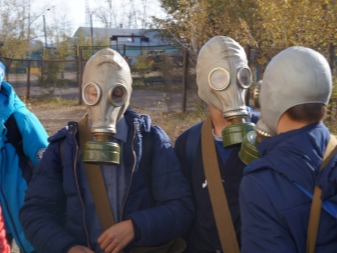
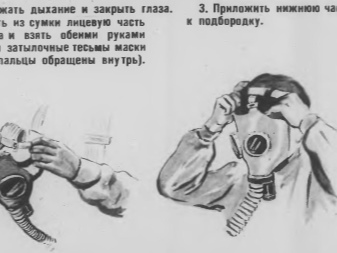
Preparation
The vast majority of the civilian population does not know how to use a gas mask correctly, and in life most people have never encountered this personal protective device. Putting on a protective device quickly and correctly is taught at school, where a course of lectures on civil defense is read for schoolchildren, and this manipulation is also mastered in the army and units of the Ministry of Internal Affairs, the Ministry of Emergency Situations. The specialists of these services pass the standard, the time of which is strictly regulated.
The use of a gas mask is justified in those cases when a "Gases" warning was given or a message was received about radioactive or chemical pollution of the environment that arose as a result of a man-made disaster or in other extreme situations.
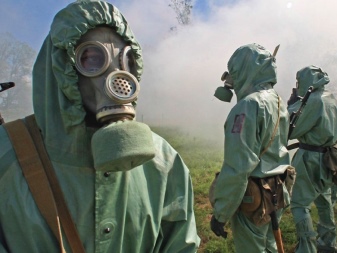
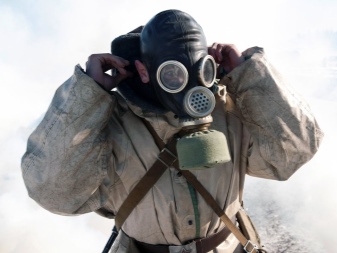
To use a personal protective device, you need to choose the right size. The parameters are determined by measuring the size of the head circumference in the vertical and horizontal directions.
The horizontal parameter is measured at the level passing in the area of the eyebrow line, then 3 cm above the level of the upper point of the ear and passes along the most protruding part of the back of the head. The vertical parameter is measured at the level that passes through the parietal region, further along the cheek and to the chin. The results obtained should be rounded to produce an integer ending in "0" or "5".
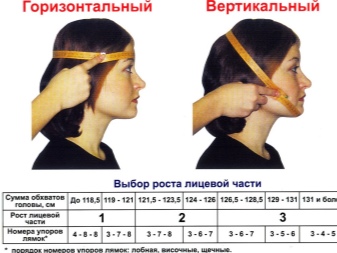
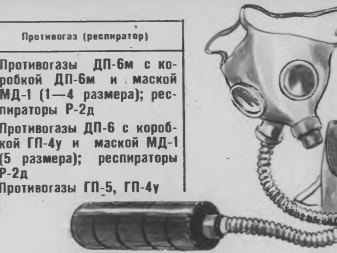
After measurements are taken, they must be flattened, and the sum of the two numbers will determine the size of the personal protective device. The size scale looks like this:
- 1260-1310 mm - VI size;
- 1265-1285 mm - V size;
- 1240-1260 mm - IV size;
- 1215 - 1235 mm - III size;
- 1190-1210 mm - II size;
- 1190 mm and less - I size.
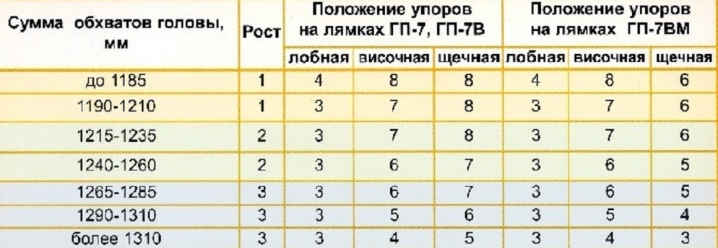
The gas mask has the ability to protect not only the respiratory system, but also the eyes, as well as the face and head from the aggressive effects of hazardous substances. The design of the protective device is based on the filtration principle, but not all models will be able to protect a person from ammonia and other chemicals, the boiling point of which exceeds 65 ° C, and not every gas mask saves from carbon and nitrogen oxides. For certain types of hazardous substances, special models of gas masks have been developed. For some of them, filtration occurs through a special cartridge PZU-PU.
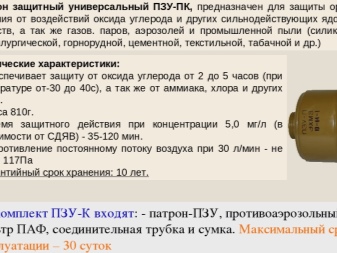
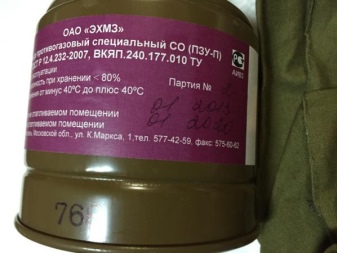
Execution order
For the use of an individual protective device, special rules have been developed, which prescribe a sequence of actions performed in stages in order to put this protective device on yourself.
The air filtering device can be worn before use in several positions: "traveling", "ready" and "combat".
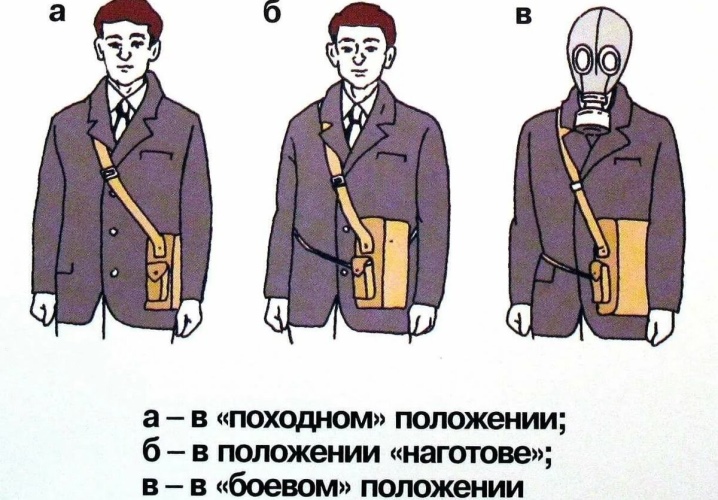
In the "stowed" position, the security device is considered to be folded and packed in a carrying bag.But not everything is as simple as it might seem at first glance. In order to prepare the gas mask in the "stowed" state, the instruction prescribes the following algorithm:
- the bag where the folded protective equipment lies must be thrown over your shoulder on the right so that it is on your side, on the left;
- the fastener of the carrier should be facing the outside, that is, "away from you";
- the shoulder straps of the bag must be adjusted so that the top edge of the carrying bag is in line with your belt;
- before using the personal protective device, it is necessary to inspect it - the helmet, the area of the eyepieces, the valve system, the tube are examined for integrity and suitability for use;
- if any part on the gas mask has a defect, it is replaced with a new one;
- after inspection, the gas mask is folded and put back into the bag, fastening the clasp on it;
- when walking, a carrier with a protective device is moved back or fixed to the body with a cord so as to create a comfortable environment for movement.
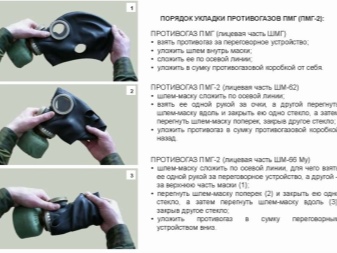
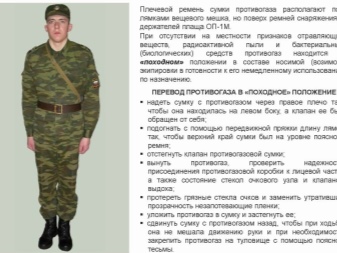
When the gas mask is brought to the "ready" state, it is assumed that it may need to be applied soon, and the very manipulation of putting on the protective device is called the "combat position" state.

Combat position
From the "stowed" state, the protector can be sequentially transferred to another state called "ready". To this end, you will need to perform the following steps:
- unfasten the fastener valve on the carrier with a gas mask;
- if there is a headdress on the head, then prepare it accordingly in order to quickly remove it if necessary.
Upon completion of these steps, the means of protection must be transferred to the "combat" position.

The protective device is used in a specific algorithm:
- close your eyes and stop the breathing process;
- remove the folded protective device from the carrier;
- the rubber mask of the gas mask is taken in hand, the thumbs are placed on the outer area of the protective helmet, and the other fingers of both hands are put into its lower part in the chin area;
- the lower third of the mask is brought into the chin area;
- with a quick jerk directed from bottom to top, the structure of the device is put on the surface of the head;
- if there are folds, they will need to be straightened, and if the mask is not tightly worn, it should be put on again;
- open your eyes and then exhale - now breathing can be performed in a natural mode.
The device is brought into the state of "combat" when there is a danger of being hit by poisonous components under extraordinary circumstances.
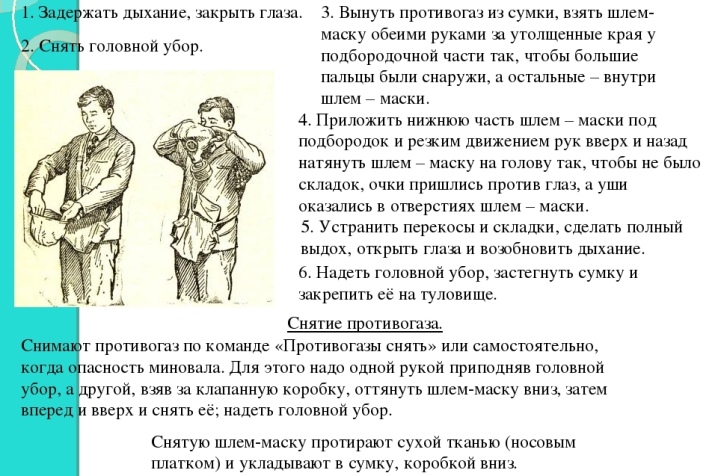
In a supine position
In some cases, a gas mask is required to be worn when a person is lying down. In such a situation, you will need to act according to the following algorithm:
- close your eyes and completely stop the breathing process;
- get personal protective equipment out of the carrier;
- turn on your side and apply the device by placing 4 fingers on the inner surface of the rubber helmet;
- exhale fully and open your eyes.
You can put on a gas mask while lying on your side or on your back.
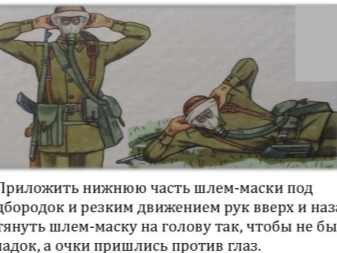
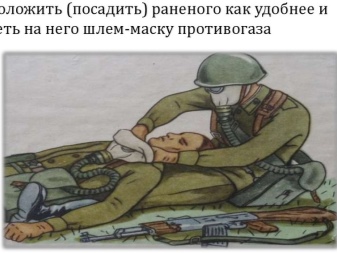
After putting the device on your head, you need to straighten its folds and make sure that the area of the glasses is in the line of the eyes.
Water resistant
Due to certain circumstances, the personal protective device may be exposed to direct exposure to water or high humidity conditions. To protect the gas mask from moisture, you need to disconnect the area of the filter boxes in the front part and check the condition of the plugs or caps made of rubber at the points of their connection with the mask. If the gas mask gets wet or fogged up, all its removable parts must be disconnected, thoroughly cleaned and dried, and the films replaced.
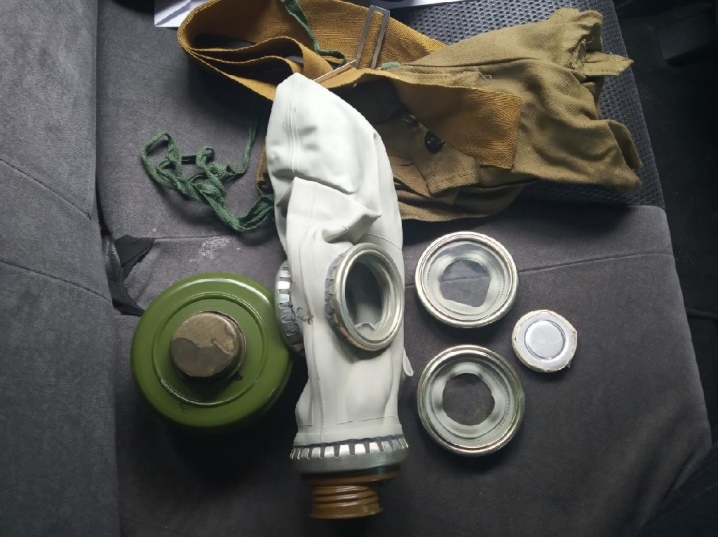
After that, the personal protective equipment is reassembled, folded and put away in a carrying bag.
There are models of gas masks, for example, PMK or PMK-2, in which it is possible for a person to drink liquid from a flask even in an infected environment. For this purpose, the gas mask is equipped with a special inlet, to which a flask with a lid and a pass valve fits. The liquid is collected in the flask in advance, in a place clean from contamination.
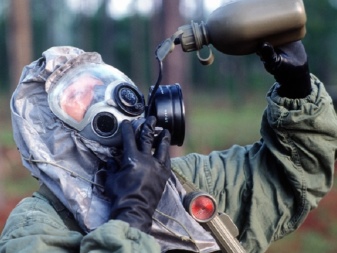

Other options
In certain situations, injured people may be in the infected zone. For to quickly put on a gas mask on an injured person or a wounded person, you will need to change his position. If possible, the victim will need to be seated and put on a gas mask in a seated position in the same sequence as if you had to use this tool for yourself. In the case when it is not possible to seat the wounded, to facilitate the task, he must be turned to one side - this will greatly simplify the procedure for putting on a gas mask.
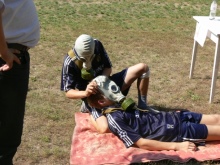
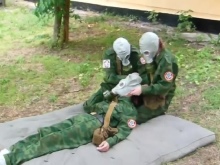

The algorithm of actions is as follows:
- sit back towards the back of the victim's head;
- raise the head of the wounded and place it on your knees;
- remove the protective agent from the victim's carrier;
- Take the rubber helmet with your hands so that in the chin area the thumbs remain on the outside, and the remaining 4 fingers are on the inside;
- bring the gas mask helmet under the victim's chin and with a sharp movement put it on the person's head.
The gas mask bag must be fixed on the victim's body with a tape.

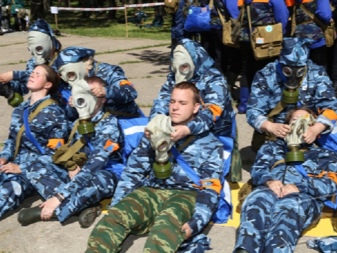
What if the gas mask is damaged?
If any parts of the gas mask are damaged, they will need to be replaced. Before use, the gas mask is checked for operability, and if damage to the device is found during the check, it must not be used.
It happens that the outwardly protective device seems to be suitable, but in the process of its application it turns out that it has a defective part of the tube. To correct the situation, take a breath, hold your breath, quickly replace the tube and restore breathing again. If it is found that the integrity of the helmet-mask is damaged, then if it is impossible to remove the gas mask, the area of the defect is closed by contact pressing the palm. In the most difficult situation, when the gas mask is severely damaged, you need to stop breathing, close your eyes, pull off the rubber helmet, disconnect the connecting tube and place its end in the mouth. Next, you need to press the wings of the nose with the fingers of one hand and continue breathing through the connecting tube, without opening your eyes.
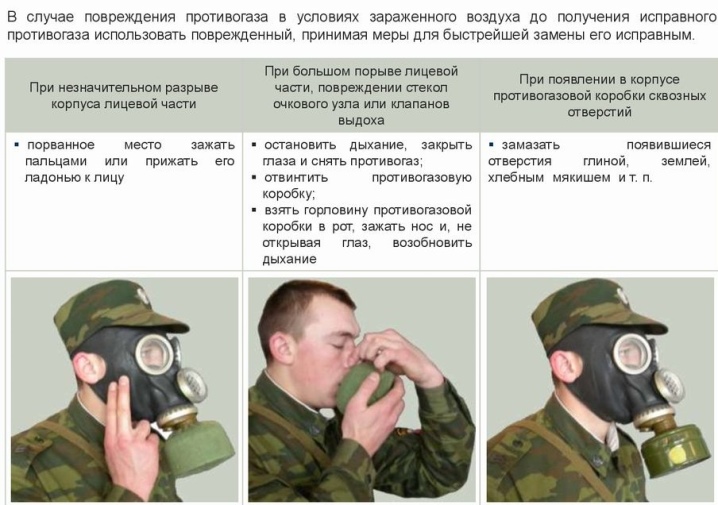
Common mistakes
The personal protective device will be worn correctly if the area of the eyepieces is flush with the line of the eyes, and the helmet-mask fits snugly and without folds to the head and face. After the device is put on the head, the first action is to exhale air into the gas mask, thereby expelling it from the gas mask circuit. Such air is conventionally considered contaminated, since it got inside the device during the process of putting it on.
Often people breathe in instead of exhaling, and this is a common common mistake that can cause poisoning.
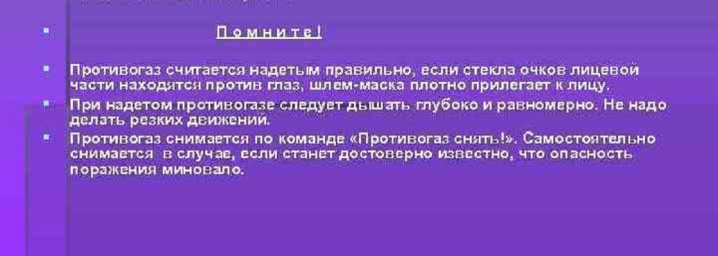
After wearing personal protective equipment, it is not recommended to make sudden head movements. It is also necessary to pay attention to the fact that breathing should be performed regularly and deeply. If you need to run, then the beginning of the process begins with light jogging, and then the pace is increased and the rhythm of breathing is adjusted to it.
Another common mistake is wearing a gas mask wrinkled or skewed. Such an oversight threatens the user with the fact that there is no vacuum suction of air along the line of contact between the mask and the face, which means that the protective structure will be leaky.In addition, it is important to pay attention to the position of the connecting tube - it must not be allowed to be kinked or twisted. Other errors are considered to be the wrong size of the product, the absence of a tag on it, dirty valves, unadjusted straps of the head part of the helmet-mask or the gas mask does not have a complete set.
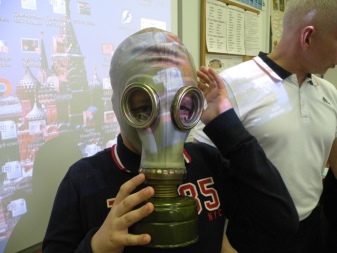
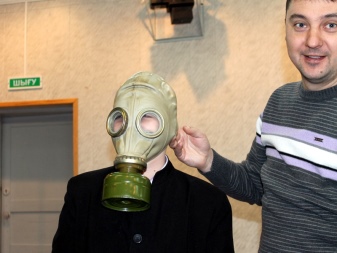
Such mistakes when passing standards reduce performance. Ideally, the gas mask should be worn within 7-10 seconds and comply with the standards for this protective equipment.
You can remove the gas mask in an area clean from dangerous pollution or by the command “Remove the gas mask!”. The procedure in this case is assumed to be the following:
- take the valve box with your hand and pull the helmet towards you;
- pull the helmet forward and upward, freeing the chin and face, and then the entire head;
- fold the personal protective equipment and put it in the carrier, fastening the fastener.
In winter, the use of a gas mask can also be performed incorrectly. Often, users forget to warm the valve box with their hands from freezing, and also from time to time to blow the exhalation valves with a sharp movement of air on exhalation.
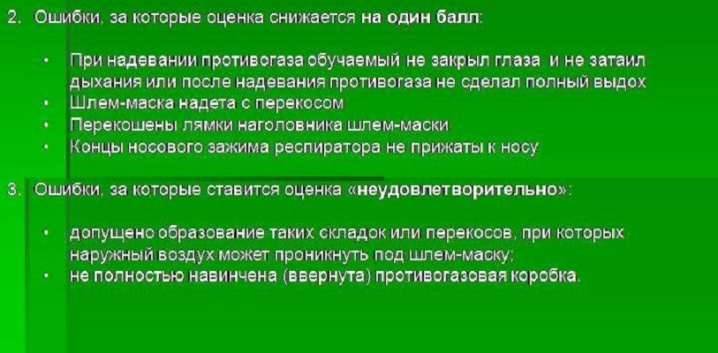
How to put on a gas mask, see below.













The comment was sent successfully.